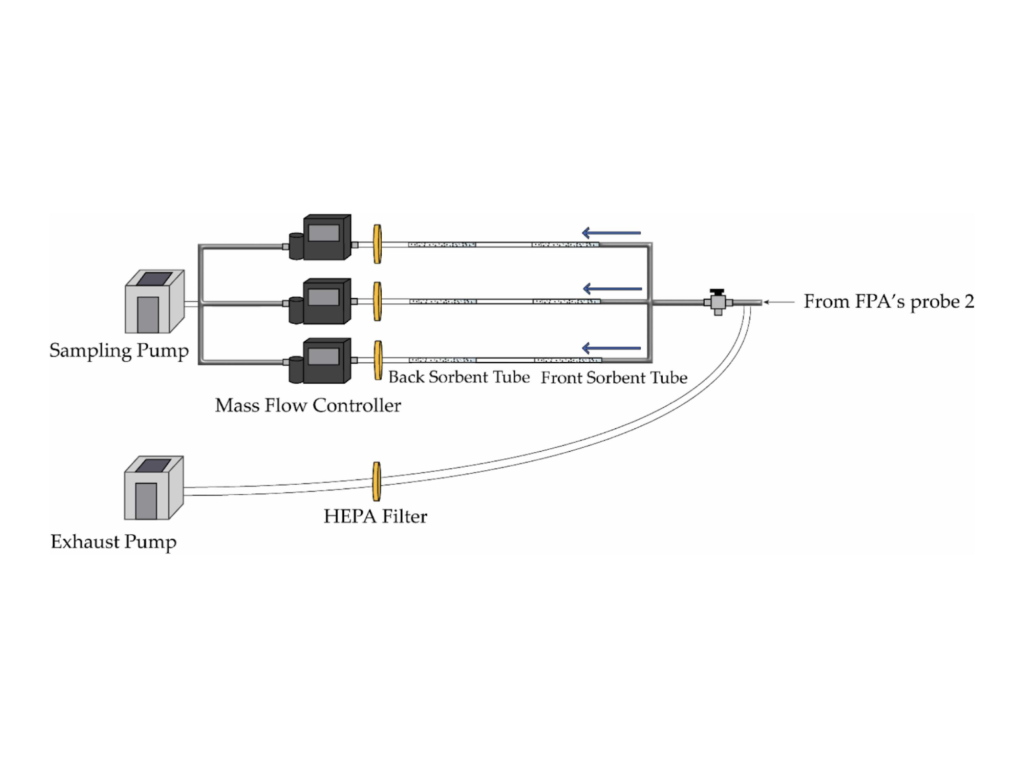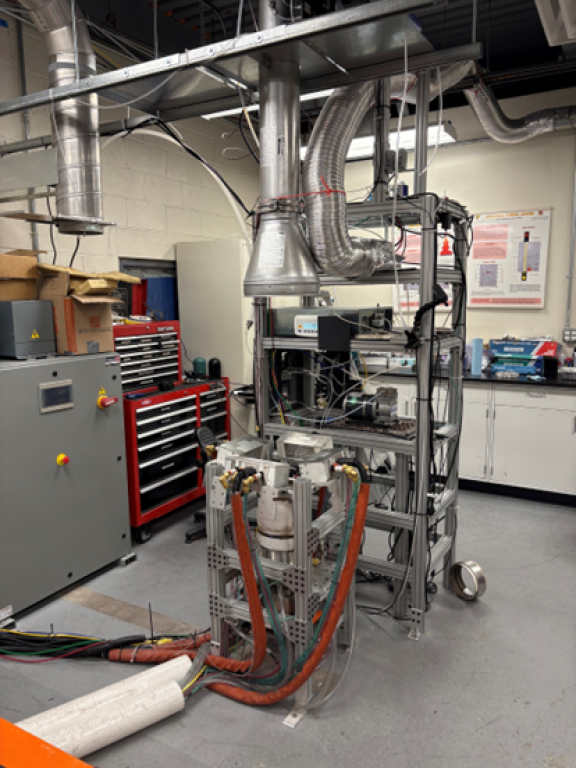
Journal Article Reports on the Development and Validation of Novel Analytical Method for Quantifying Methyl Methacrylate Yields
The peer-reviewed journal article, “Application of sorbent tube sampling coupled with GC-MS for quantification of methyl methacrylate monomer yields from pyrolysis of poly(methyl methacrylate),” has been published in the Journal of Analytical and Applied Pyrolysis. Key findings from this study support the “Thermal Decomposition of Materials” research project, led by the Fire Safety Research Institute (FSRI), part of UL Research Institutes. Kaylee Morton, FSRI research scientist, co-authored this paper with Mahsa Lotfi Marchoubeh, Barnaz Beygi Khosroshahi, and Stanislav Stoliarov.
Understanding Pyrolysis from Poly(methyl Methacrylate)
Pyrolysis is the anaerobic process in which material(s) thermally decompose when exposed to heat. The study of pyrolysis helps predict the ignition and fire spread over a solid surface. Anaerobic pyrolysis replicates the thermal decomposition of the solid material when the surface is covered by flame and lacks access to oxygen.
Pyrolysis yields various volatile compounds and solid residues. Analyzing these compounds explains the degradation mechanisms and thermal stability of polymers. These analyses aid in the development of material with tailored thermal properties and enhanced performance. Additionally, they inform computational fluid dynamics-based fire dynamics models, such as the Fire Dynamics Simulator, that are used by engineers to predict the severity and impact of accidental fires.
Developing and Validating a Novel Analytical Method for Quantifying MMA Yields
Poly(methyl methacrylate) (PMMA) is a transparent thermoplastic, commonly known as acrylic or Plexiglas. It is widely studied for its well-characterized thermal decomposition and combustion. The simplicity of PMMA’s structure makes its pyrolysis behavior predictable and easy to model, facilitating its use in simulations. PMMA is also used in various industries due to its optical clarity and mechanical properties. With a growing emphasis on sustainability, recycling PMMA through pyrolysis has become an area of interest, and understanding the monomer’s yield during pyrolysis is essential for optimizing recycling processes.
Studies by various researchers have demonstrated that PMMA decomposes predominantly into the same chemical it was made from, methyl methacrylate (MMA). Various studies have also reported measurements of pyrolysis by-products of polymers, which often use small-scale instrumentation unsuited for real fire conditions. The Fire Propagation Apparatus (FPA) is an effective tool for performing laboratory-scale experiments to better understand polymeric decomposition yields under various conditions. By using the FPA, various parameters can be manipulated to study their impact on pyrolysis yields, and the FPA can also be easily modified to sample pyrolyzates. Prior studies utilized condensation methods to collect gases from the material(s), and although it was successful, limitations remain– presenting opportunities for improvement.
An enhancement to the condensation method is the use of sorbent tubes, which have many benefits such as:
- Packed with adsorbing materials– Sorbent tubes are filled with materials that are designed to selectively adsorb target compounds. They offer high sensitivity and can efficiently capture volatile and semi-volatile compounds at low concentrations.
- Effective operation across conditions without temperature controls– Unlike cold condensation, which relies on cooling gases to condense analytes, sorbent tubes do not need temperature controls, making them more practical and cost-efficient in the field.
- Easy sample handling and transportation– Sorbent tubes facilitate easy sample handling and transportation to the laboratory for subsequent analysis, and the adsorbed compounds remain stable on the sorbent material. This stability reduces the risk of analyte loss or degradation, ensuring accurate and reliable results.

Utilizing Sorbent Materials for Gas Sampling
Sorbent materials used for gas sampling have been used in two primary ways. One approach is to selectively sample specific compounds from a complex mixture. This combined pre-concentration and filtering process is achieved using sorbents with active functional groups that interact with target compounds during sampling. Another approach involved non-targeted sampling using universal sorbents, which efficiently capture a broad range of pyrolysis products.
While sorbent-based methods facilitate the detection of pyrolysis products, understanding the factors that influence the yield of these products remains critical for accurately characterizing polymer decomposition. Researchers have studied the following variables for the potential impact of MMA monomer outputs:
- Oxygen levels
- Temperature levels
- Type of PMMA (cast vs. extruded)
In this study, FSRI scientists investigate the yields of MMA generation along with other pyrolysis by-products during the controlled pyrolysis of PMMA using the FPA. Unlike prior studies that regulate the temperature of pyrolyzing samples, FSRI scientists subjected PMMA to a steady radiant heat flux, creating highly non-uniform in-depth temperature profiles that mimic realistic fire conditions. These conditions result in cooler and hotter regions within the materials, leading to the formation of various compounds over time.
This work pursued three specific goals:
- To develop a novel, practical, and selective method for detecting MMA, while also enabling non-targeted detection of other species generated during thermal decomposition;
- To measure the yields of MMA generated during the pyrolysis of PMMA under fire-like conditions, compare these yields to those obtained using other methods that do not replicate fire scenarios, and assess the impact of radiant heat flux and manufacturing processes on monomer generation;
- To demonstrate the effectiveness of this method in sampling a broader range of pyrolysis by-products.
This study developed and validated a novel analytical method for measuring the yield of MMA generated during fire-like pyrolysis of PMMA. Unlike methods relying on static or prescribed temperatures, this approach captures the complexity of actual fire scenarios, where cooler and hotter regions lead to the generation of diverse compounds. The analytical method developed allowed for robust sampling and accurate yield measurements, demonstrating that MMA yields remain comparable to those reported in the literature. Compared to traditional solvent-based trapping methods, the sorbent-based approach employed in this study offers key advantages, including simplicity, adaptability to field applications, and elimination of cooling requirements. Sorbent trapping also minimized analyte loss and interference during analysis, enhancing reliability. This work highlights sorbent trapping as a robust alternative for MMA quantification under fire-like conditions.
For further details of the study, including materials, methods, and results: Read the full article

